Review: LG Fathom from Verizon Wireless

The LG Fathom has surfaced from the depths at at time when some believe the Windows Mobile Windows Phones (we really have to work on these names) have all but dried up. The Fathom offers a Snapdragon processor along with Windows Mobile 6.5.3. It's being offered through Verizon Wireless for $379 without a contract or as low as $149 with a two year commitment.
The first impression from the Fathom is positive. The build quality feels solid and the phone rests comfortably in the hand. Beyond that, the Fathom is a little bit of a mixed bag lacking flavor in many areas.
For more on the LG Fathom, you know the drill, just ease on past the break.

Design
The tale of the tape has the LG Fathom measuring in at 4.53 x 2.2 x .65 inches and weighing 5.36 ounces.
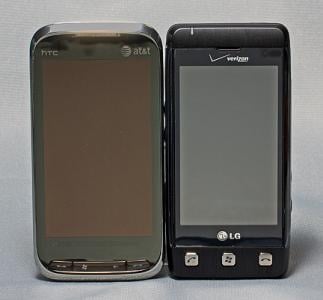
The physical size of the Fathom is slightly larger than the LG Expo (4.45 x 2.16 x .63 inches) but slightly narrower than the HTC Touch Pro 2 (4.57 x 2.33 x .68 inches).

The Fathom sports a 3.2", 480x800, resistive touch screen and on the face of the Fathom you will find three buttons (Answer, Start, and End).
All the latest news, reviews, and guides for Windows and Xbox diehards.
Underneath the hood is a Qualcomm Snapdragon 1ghz processor that zips along nicely. In looking at the core specs of the Fathom, some may think it's prime for an upgrade to Windows Phone 7 but is an unlikely possibility.

Moving around the Fathom, to the left side you will find a 3.5mm headphone jack, volume keys and a microUSB port. To the right side of the Windows Phone is the microSD expansion card slot, a telescopic stylus, a task manager button, and a camera button. To the top of the Fathom rests the power button.

I do have one little nit with regards to the micro-USB port. The port is covered by a little plastic flap with a rubber hinge. The Fathom's reset button sits beneath this flap, right next to the micro-USB port. My concern is that if the rubber hinge should break, you expose the reset button. I would have preferred to see an exposed USB port and have a pinhole access through the casing for the reset button.

Along the backside sits a 3.2 megapixel camera and speaker. The Fathom is fitted with a light sensor to automatically adjust the backlight, a proximity sensor, and an accelerometer. The accelerometer can be turned off and the screen rotated smoothly with no lag time present.
The Fathom has a matte, navy blue finish that is a little on the slick side. I like the finish on the Fathom but a little texture on the battery cover would have been useful.
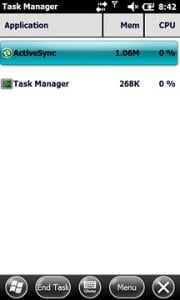
I first had reservations about the placement of the Task Manager button on the right side of the phone. I was concerned that it would be prone to accidental activation but the design of the button requires it to be depressed a good distance. This reduces the chances of accidentally pressing either the camera or Task Manager buttons.
Touch Screen
As mentioned, the touch screen measures 3.2" diagonally with a resolution of 480 x 800. I found the screen to be moderately responsive to the touch but needed the stylus (or long fingernails) to make the more precise movements such as moving a scroll bar.
No complaints with regards to the screen's colors or sharpness. The screen performed well in daylight no better or worse than any other Windows Phone on the market.
Keyboard

The Fathom has a side-sliding, QWERTY keyboard. The mechanics involved in sliding the keyboard are smooth and the keyboard extends/retracts nicely with a bit of firmness.
The keyboard is a four row QWERTY with a directional pad resting to the right of the keyboard. Above the d-pad is a speaker phone button and a back button.
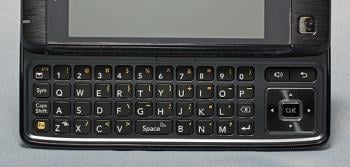
The keyboard is somewhat compact (to allow for the directional pad) and coming from using the larger keyboard of the Tilt2, the Fathom's keyboard was a little uncomfortable at first. The keys were crisp to the touch with no softness experienced it just felt a little cramped.
One key issue I discovered with the keyboard is that while the top row is numerics, punctuation marks and symbols require the function key to be used. At the very least, the period and comma should have their own key to avoid having to press the function key every time you want to end a sentence.
The presence of the d-pad takes up a good bit of real estate. While I'm not opposed to having a directional pad, I would have preferred to have seen arrow keys or a smaller d-pad used (maybe even an optical mouse or track ball) to allow for more space to have been used by the keyboard. This might have also allowed for more shortcut keys to have been used. As is, the only shortcut key is for your messaging app.
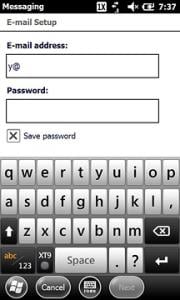
The Fathom does have an on-screen keyboard for those times you're on the run and need to tap something out quickly or simply are in the mood to keep the QWERTY keyboard retracted. The on-screen keyboard performed no different than any other Windows Phone on-screen keyboard. The keys seemed a touch larger though, reducing the number of mis-keys.
Software


The Fathom is loaded with Windows Mobile 6.5.3. It's the more recent version of Windows Mobile, most noted by the Start button being moved from the top of the screen to the bottom. Beyond running 6.5.3, there are very few bells and whistles with respect to the Fathom's software.
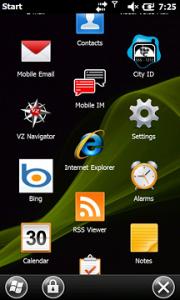

You do have the obligatory Verizon bloatware (Verizon Navigator, City ID, MSN Weather, MSN Money, etc.) as well as BING and Marketplace for Mobile. Microsoft's MyPhone is also pre-installed.

The Home or Today Screen on the Fathom is the standard Titanium Screen for Windows Mobile. For some reason LG opted not to install their proprietary user interface, LG Idles, on the Fathom as they did the Expo. It's a little disappointing in that the custom UI would have added some flavor to a relatively plain Windows Phone.

One nice feature of the software is the screen lock. Not only do you have the "slide to unlock" button but you also have a gesture's screen. You can swipe a symbol in the gesture field to launch core apps. Trace a "C" and your calendar will launch. Trace an "I" and Mobile Explorer launches.

Oh, another nice feature of Windows Mobile 6.5.3 that the Fathom benefits from is the ability to re-arrange icons on your menu screens. Simply press and hold an icon, it will ghost (become semi-transparent) and you can then drag it to a new location on the menu window.


The Fathom has an internal GPS that performed much like any other internal GPS. It does have a-GPS and performance was noticeably faster with Verizon Navigator. This isn't to mean it was slow as snails with BING (took about three minutes from a cold start with BING) but likely faster by using a-GPS and cell towers to speed up positioning.
Camera

The 3.2 megapixel camera on the Fathom felt more like a last minute add-on than a seriously thought out feature. The software driving the camera is far more impressive than the camera itself. Why LG didn't go with a 5 megapixel camera (or greater) as they did with the Expo is a bit of a mystery.

Image quality is marginal at best. The Fathom's camera seems to work better indoors than out with a slight haze being haze consistently present with outdoor shots.
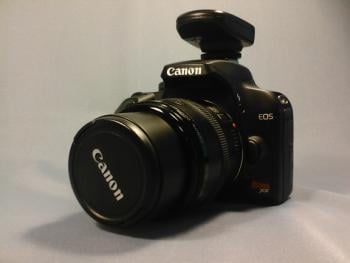

The camera does have video capability but again, the quality is marginal at best. You still have a bit of haze present when you capture video outdoors.
Performance

The Fathom is fitted with a 1500mah battery that has an average life span. With moderate use (a few voice calls, surfing the net, checking email and synchronizing with Google) the battery easily made it through the day without recharging. The power management of the Fathom made the most of the battery.
The Snapdragon processor moves everything along at a nice pace. There were no lags in moving around the Fathoms' applications.
With regards to being a phone, the microphone on the Fathom picked up my voice nicely and the ear speaker delivered adequate volume levels. The rear speaker did an "okay" job of it.
Overall Impression

The LG Fathom is a nice phone.
While the Fathom is nice, it lacks features that would allow it to stand out amongst the other Windows Phones on the market. HTC has the Sense UI, Samsung has Widgets, and Sony has Panels. LG does have Idles but for some reason it was left off of the Fathom. While the Fathom is a nice phone, as is, it feels as though something's missing.
I still have reservations on the keyboard. The directional pad takes up a significant amount of space and gives the keyboard a cramped feel. I can't help but think a smaller alternative might have been better.
On a positive note, the Fathom is worth considering if you want an entry level Windows Phone that you could build upon with third party apps. For example, if the Titanium Home Screen isn't your cup of tea SPB's Mobile Shell is a possibility. Should a HardSPL be released to allow custom ROMs to be installed on the Fathom, I'm sure chef's could make the most out of the Snapdragon processor and add a little flavor to the Fathom along the way.
The bottom line is that the Fathom is a well built, reliably performing Windows Phone without any bells and whistles. I would be hard pressed to recommend the Fathom when for just a little more investment, you can have the HTC Touch Pro 2 or Imagio or even the Samsung Omnia II. The Snapdragon processor is nice but it alone won't bring the Fathom past the vanilla flavor stage.

George is a former Reviews Editor at Windows Central, concentrating on Windows 10 PC and Mobile apps. He's been a supporter of the platform since the days of Windows CE and uses his current Windows 10 Mobile phone daily to keep up with life and enjoy a game during downtime.
